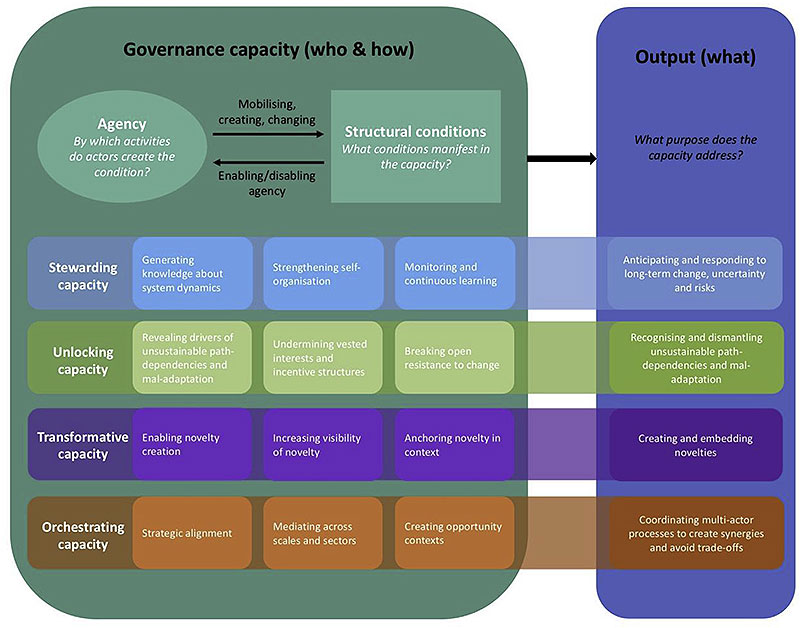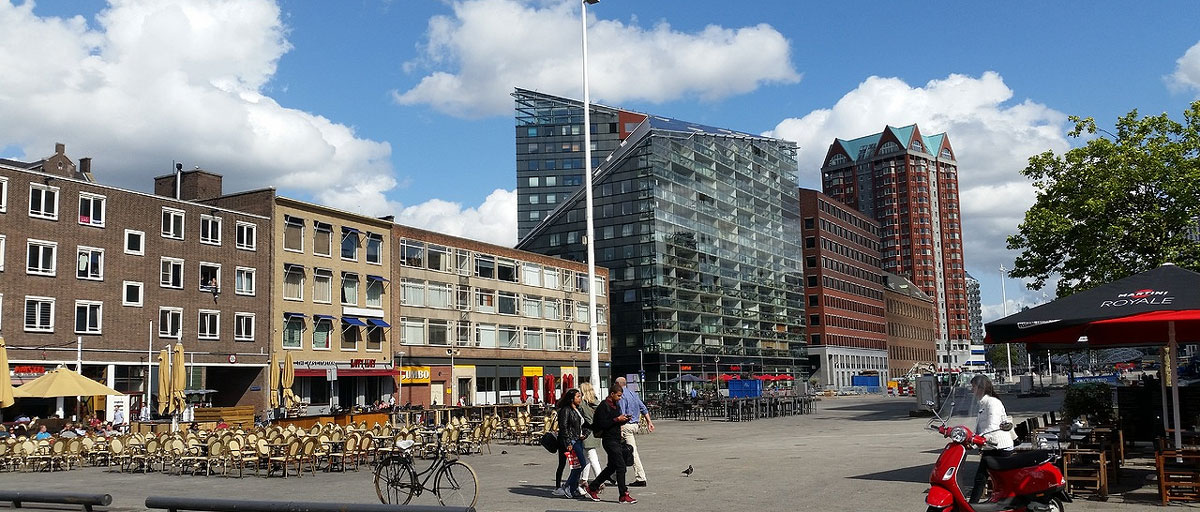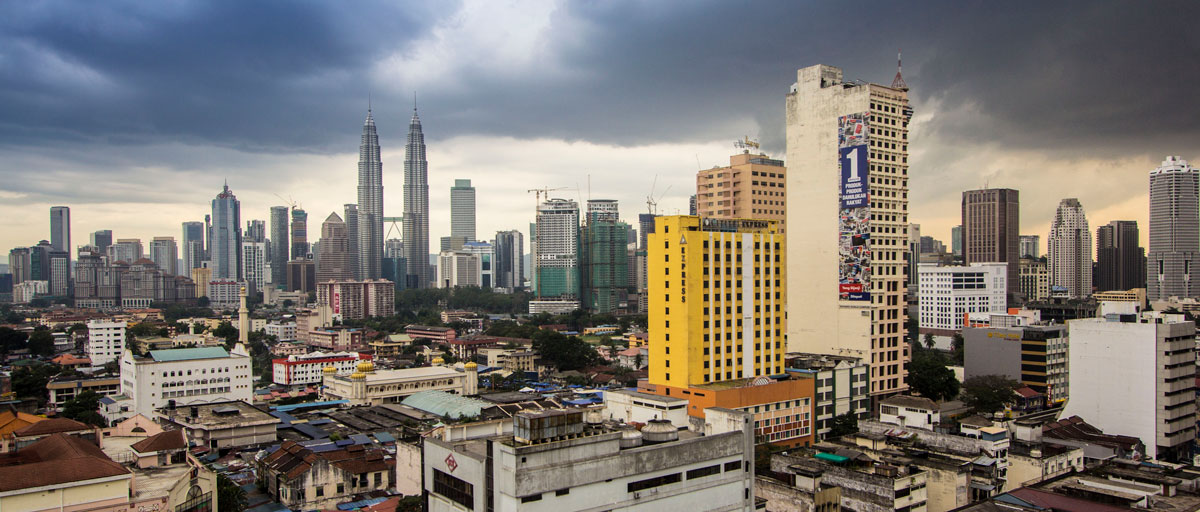Bildtext får vara max två rader text. Hela texten ska högerjusteras om den bara ska innehålla fotobyline! Photo: B. Christensen/Azote
URBAN CLIMATE GOVERNANCE
A tale of two transformative cities
Rotterdam and New York are global pioneers in urban climate adaption, but mainstreaming their sustainability strategies remains a struggle
- In both Rotterdam and New York, several strategies and initiatives have won international acclaim for their design and integrative approach
- Yet, many of them remain difficult to mainstream in policy and planning practices and are add-on priorities to short-term strategies
- The next-step for these frontrunner cities is to turn the many innovative strategies and wide-spread willingness to collaborate into more decisive and integrated action
It may not be a Charles Dickens tale of the best and worst of times but Rotterdam and New York, two of the most advanced cities when it comes to climate change adaptation, struggle transforming their lofty sustainability ambitions into tangible results. In both cities, several strategies and initiatives that have involved a wide range of stakeholders have won international acclaim for their design and integrative approach. Yet, many of them remain add-on priorities to short-term and mainstream policy and planning practices when viewed in the context of need for more fundamental transformations in policy and planning.
This is the conclusion in a study recently published in Journal of Environmental Management. The study, written by centre researcher Timon McPhearson in collaboration with colleagues from the Dutch Research Institute for Transitions (DRIFT) at Erasmus University, Rotterdam, takes a closer look at the efforts made in the cities and what is needed to really transform their ambitions into applied actions.
Action for climate change frequently draws the short straw when competing with ‘pressing’ urban needs of the present, such as affordable housing, and thus often relies on more easy investments in low-hanging fruits that do not fundamentally question existing behaviors and private and public interests
Timon McPhearson, co-author
McPhearson explains that Rotterdam and New York are examples of cities setting a global standard for climate change adaption but legal, bureaucratic and practical hurdles, perhaps not surprisingly, remain.
Short-term interests and investments prevail
Both are delta cities exposed to climate impacts such as sea level rise, rising river and groundwater levels, and being at the receiving end of heavy downpours and storms. As a consequence, they have also made efforts to implement cross-cutting institutional efforts that coordinate climate, resilience and sustainability-related actions and collaborations.
For instance, in New York, former mayor Michael Bloomberg (2002-2014) ignited a city-wide agenda on sustainability and climate mitigation that tied goals such as emissions reductions, improving air quality, managing population growth, modernising infrastructure and liveability. This has further been extended by current mayor Bill de Blasio. But in New York as in Rotterdam, stewarding capacity is constrained by fussy distribution of responsibilities and a lack of mainstreaming several of the desired approaches.
“Existing interests, incentive structures and regulations favour short-term economic interests and investments,” lead author Katharina Hölscher of Erasmus University in Rotterdam explains.
This is frustrating, because both cities have demonstrated a strong transformative capacity in addressing climate change issues on a strategic, operational and institutional level. Despite this, these capacities have struggled to permeated city-wide planning and decision-making. In Rotterdam for instance, innovative projects often remain stand-along initiatives which are showcased internationally rather than locally to create business opportunities for local companies.

Conceptual framework: capacities for transformative climate governance.
Getting to decisive action
The next-step challenge in the two cities is, according to the authors, to turn the many strategies and wide-spread willingness to collaborate into more decisive and integrated policy and planning actions.
“There is a need for strengthening institutional and organizational conditions for more decisive prioritization of long-term climate investments and actions, better funded collaboration mechanisms and improved space for learning from experimentation and with input from the voices of local residents,” Timon McPhearson explains.
To do this, the cities must move beyond three things:
One, they need to move beyond the state of envisioning to make tough decisions about goals to be priorities and mainstreamed into established institutional frameworks.
Two, they need to go beyond “coalitions of the willing”, meaning a stronger coordination between the multitude of partnerships and networks is needed. This is no easy challenge, but is critical to mainstream climate change adaptation from transitions to transformation.
Three, the cities must move beyond experimentation. This requires the time to identify, evaluate and translate lessons from specific innovations to a broader context to scale up and better integrate lessons for citywide implementation.
If Rotterdam and New York manage to deal with these governance challenges, the authors conclude, the tale of these two cities can be action-oriented and an empowering inspiration for others cities around the world.
Methodology
The researchers performed desktop research to review policy documents (strategies, visions and programmes from 2007 to 2017 for Rotterdam and NYC media articles and scientific papers about climate, resilience and sustainability governance in Rotterdam and NYC. Secondly, they conducted semi-structured interviews with a mix of informants from local, regional (in Rotterdam referring to water boards, in NYC from the New York City and State government), national governance scales as well as from government, market and civil society that are involved in climate governance in the context of the respective city. They also attended workshops and meetings related to strategy formulation and knowledge exchange. For each case study, the collected data was analysed in reference to a transformations capacities framework.
Hölscher., K., Frantzeskaki, N., McPhearson, T., Loorbach, D. 2019. Tales of transforming cities: Transformative climate governance capacities in New York City, U.S. and Rotterdam, Netherlands. Journal of Environmental Management Volume 231, 1 February 2019, Pages 843-857 DOI: 10.1016/j.jenvman.2018.10.043

Timon McPhearson is an associate research fellow focused on urban resilience and the role of ecosystems as nature-based solutions for climate change adaptation in cities










